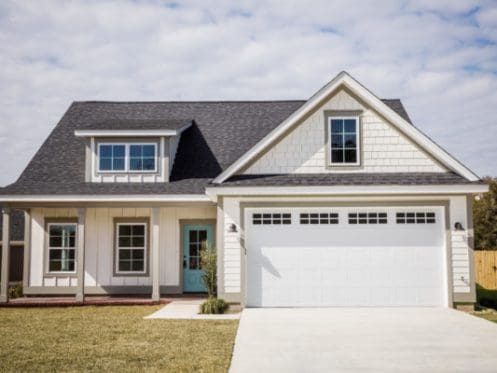During summer and winter, we are reliant on our HVAC systems to get a comfortable environment within our homes. However, this means that the system consumes a lot of energy yearly, making it a substantial expense. It is, therefore, essential to understand how an HVAC system works to reap its benefits.
What an HVAC System Entails
HVAC is an acronym for “heating, ventilation, and air conditioning.” An HVAC system is an assembly of different equipment working together to provide cooling, heating, and indoor climate control. It involves electrical and mechanical components working harmoniously to provide a comfortable environment or preserve goods and products in a building.
Components of an HVAC System
An HVAC system has many parts combined for the unit to run smoothly. It consists of two parts: the outdoor and indoor components. The outdoor unit generally consists of the following components.
Refrigerant
Air conditioning cannot occur without a refrigerant. It absorbs heat from the inside environment and cools the air in the building. During winter, it operates in reverse by absorbing the heat in the outside environment and dissipating it into the building. The most common refrigerants used are R-134A and R-410A hydrofluorocarbon; these are energy efficient and produce a byproduct that contributes as little as possible to the greenhouse effect.
Compressor
A compressor is a machine that circulates the refrigerant through the coils to allow heat exchange. It raises the pressure and temperature of the refrigerant to move heat from inside the building to the condenser to allow it to exhaust heat. The air conditioner compressor also compresses air pulled in by the fan from the outside environment.
Condenser
This is an outdoor unit full of refrigerant and is the machine that dissipates the absorbed heat. The condenser turns the refrigerant vapor back into a liquid when the vapor passes through the coils and undergoes cooling. Heat transfer to the outside environment happens in the condenser, with this process running continuously.
Furnace Equipment
This part of your HVAC system is inside the building and is typically located in the basement or utility room. It looks like a large metal box with multiple tubes going into it. It consists of the following parts.
Evaporator Coils
The refrigerant passes through the evaporator coils, and this cools the air that passes across the coils as it contacts them. The refrigerant absorbs heat from the hot air, and the cold air circulates into the building.
Blower
The blower creates the air currents passing over the evaporator coils. It is designed to increase the air passing through and deliver it throughout the house. The blower is connected to a motor that only runs when the indoor temperature reaches the temperature set on the thermostat.
Filter
The filter is porous and removes impurities and allergens from the passing air since the outside air is not always clean. It ensures dust and debris do not clog up the system and delivers a clean air supply to the building.
How the HVAC System Works
In principle, the HVAC system uses refrigerant to remove heat from the building into the outside environment. First, the refrigerant is compressed by the compressor in the outside unit and becomes a liquid. The process warms up the refrigerant, forcing it to be cooled via the condenser. It is cooled by air blowing from the fans that are over the condenser coils containing the refrigerant.
The next process passes the refrigerant across an expansion valve to expand the liquid to a cold gas. The gas flows into the evaporator coils, which absorb the heat from the inside air as it passes through. A fan is used to blow the indoor air over the evaporator coils for cooling. Because of the heat absorption, the refrigerant is now hot and must be passed through the compressor again. The cycle is repeated for the entire running period of the HVAC system.
The Different Types of HVAC Systems
HVAC systems come in many different types, each with advantages and disadvantages. The best type for you depends on many factors, including location, building size, and power needs. Here are some of the options available.
Central Heating and Cooling Split HVAC Systems
These systems are designed to provide both cooling and heating functions. They are systems with separate outdoor and indoor units and are the most commonly used because of their high SEER rating and improved energy efficiency. The outdoor unit comprises the compressor and condenser. The indoor unit is an evaporator that uses copper tubes to connect to the outdoor unit. Warm air is directed to the evaporator by the blower, where heat is absorbed, and cold air is directed into the house.
Hybrid Split HVAC System
A hybrid HVAC system can use either electric or gas power, depending on the energy requirements. They function similarly to other split HVAC systems but require less energy to run. When heat is needed, the furnace heats up air using fuel such as oil or natural gas, with the blower fan routing the warm air into the house through ducts. When cooling is needed, the air conditioning system normally provides cool air within the house.
Ductless Mini-split HVAC Systems
Unlike a standard HVAC system, the ductless mini-split system works with minimal energy loss. Energy loss reduces since no ducts are used, with the system being highly efficient for small areas. The indoor unit mounts on the wall. The outdoor unit is placed on the ground or attached to a wall. Both indoor and outdoor units connect via a small pipe. These systems do not require ducts to heat or cool a building and are easier to install.
Packaged HVAC Systems
All HVAC system components are combined into a single unit and usually placed beside a wall. Packaged HVAC systems are not energy efficient but are a good choice for houses with limited space. They contain a blower that draws hot air into the system and forces cooled air into the house. The ductwork circulates air throughout the house.
Geothermal HVAC Systems
These are eco-friendly and energy-efficient and reduce electricity usage. Geothermal HVAC systems provide cooling and heating by using the ground as a heat exchanger and underground pipes filled with refrigerant. A heat pump is installed in the house with connecting hoops and acts as an air conditioner or furnace. While these systems aren’t as popular because of their higher installation cost, the savings that you will experience on your energy bills and the fact that they last 10-15 years longer than your typical HVAC unit more than make the upfront investment worth it.
Understanding how an HVAC system works can help you maintain your system properly. The designs may vary as a result of different environmental conditions, but the working principle of any HVAC system remains the same. Charleston Heating and Air offers top-notch HVAC installation, repair, and maintenance services. We also offer plumbing and electrical services to our neighbors in the entire Charleston, SC metro area. Our Preferred Partner Plan will help you stay on top of maintenance for all of your household systems. Contact Charleston Heating and Air for more information about the services that we offer.

